
How to Use RPI 4 Model B: Examples, Pinouts, and Specs
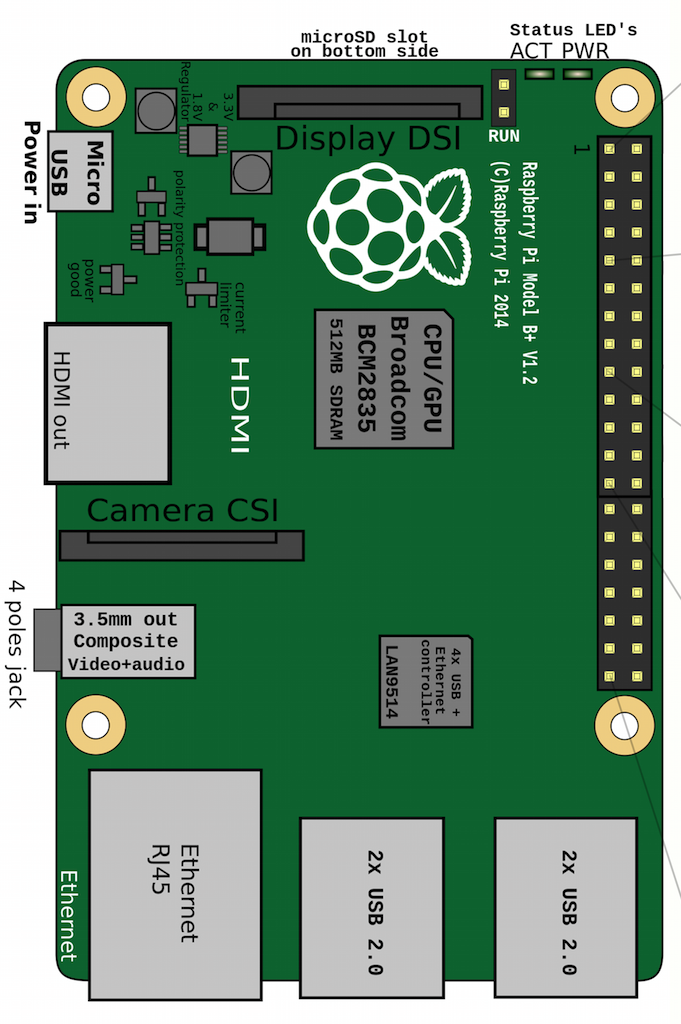
 Design with RPI 4 Model B in Cirkit Designer
Design with RPI 4 Model B in Cirkit DesignerIntroduction
The Raspberry Pi 4 Model B, manufactured by Raspberry, is a compact, low-cost single-board computer designed for a wide range of applications. It features a powerful quad-core ARM Cortex-A72 processor, up to 8GB of RAM, dual-band Wi-Fi, Bluetooth 5.0, and multiple USB ports. This versatile device is ideal for educational purposes, prototyping, IoT projects, media centers, and even as a desktop replacement.
Explore Projects Built with RPI 4 Model B
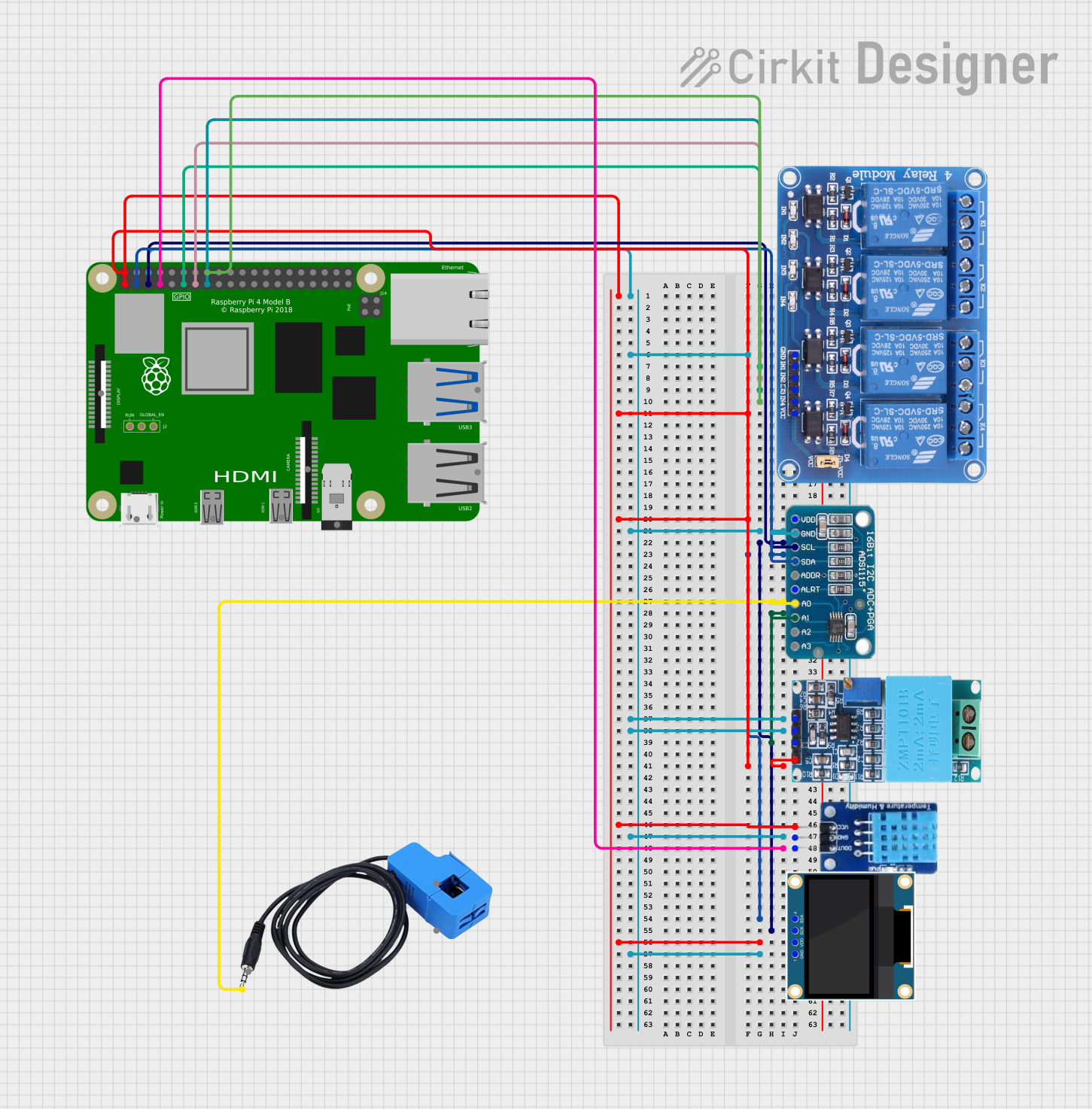
 Open Project in Cirkit Designer
Open Project in Cirkit Designer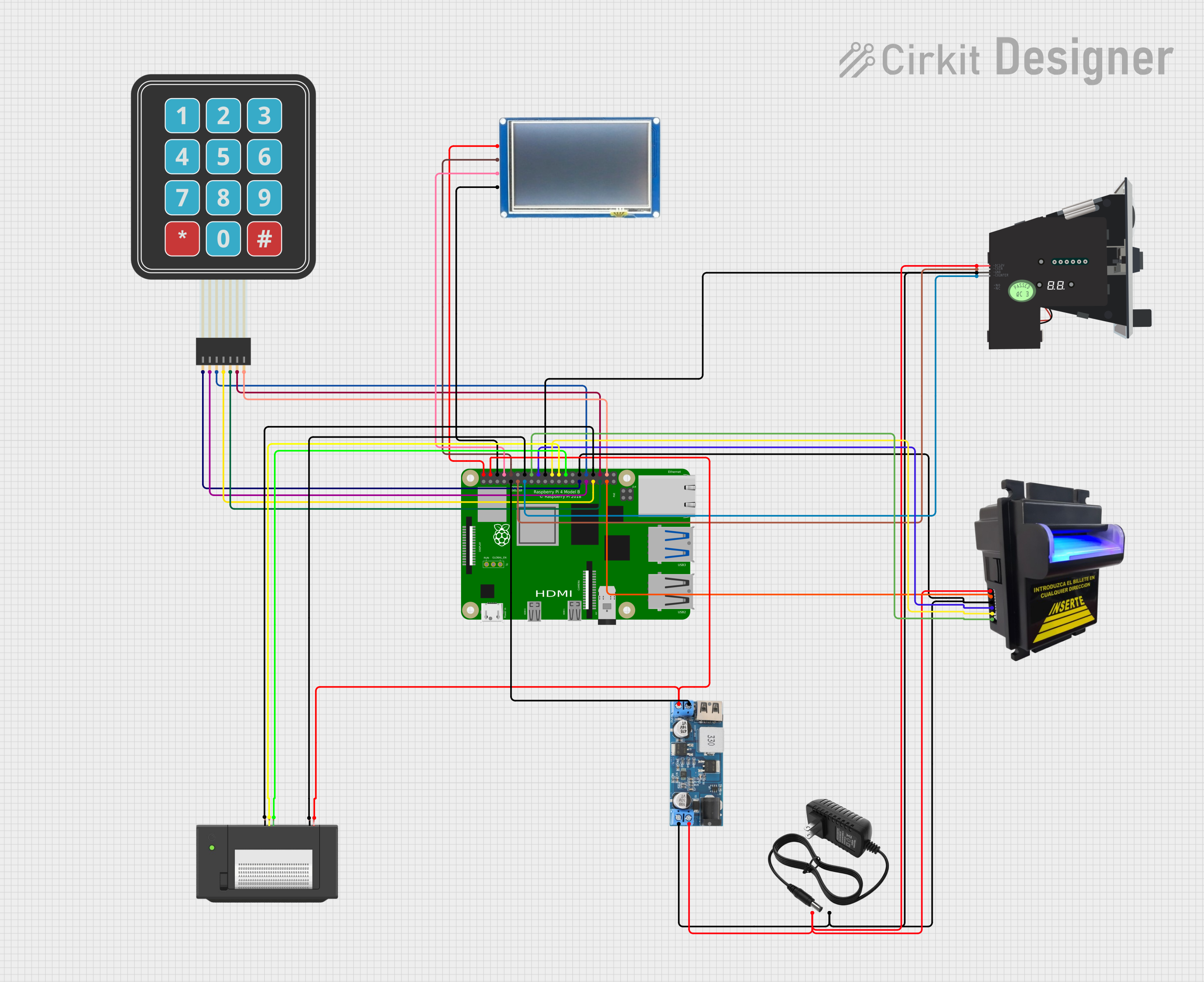
 Open Project in Cirkit Designer
Open Project in Cirkit Designer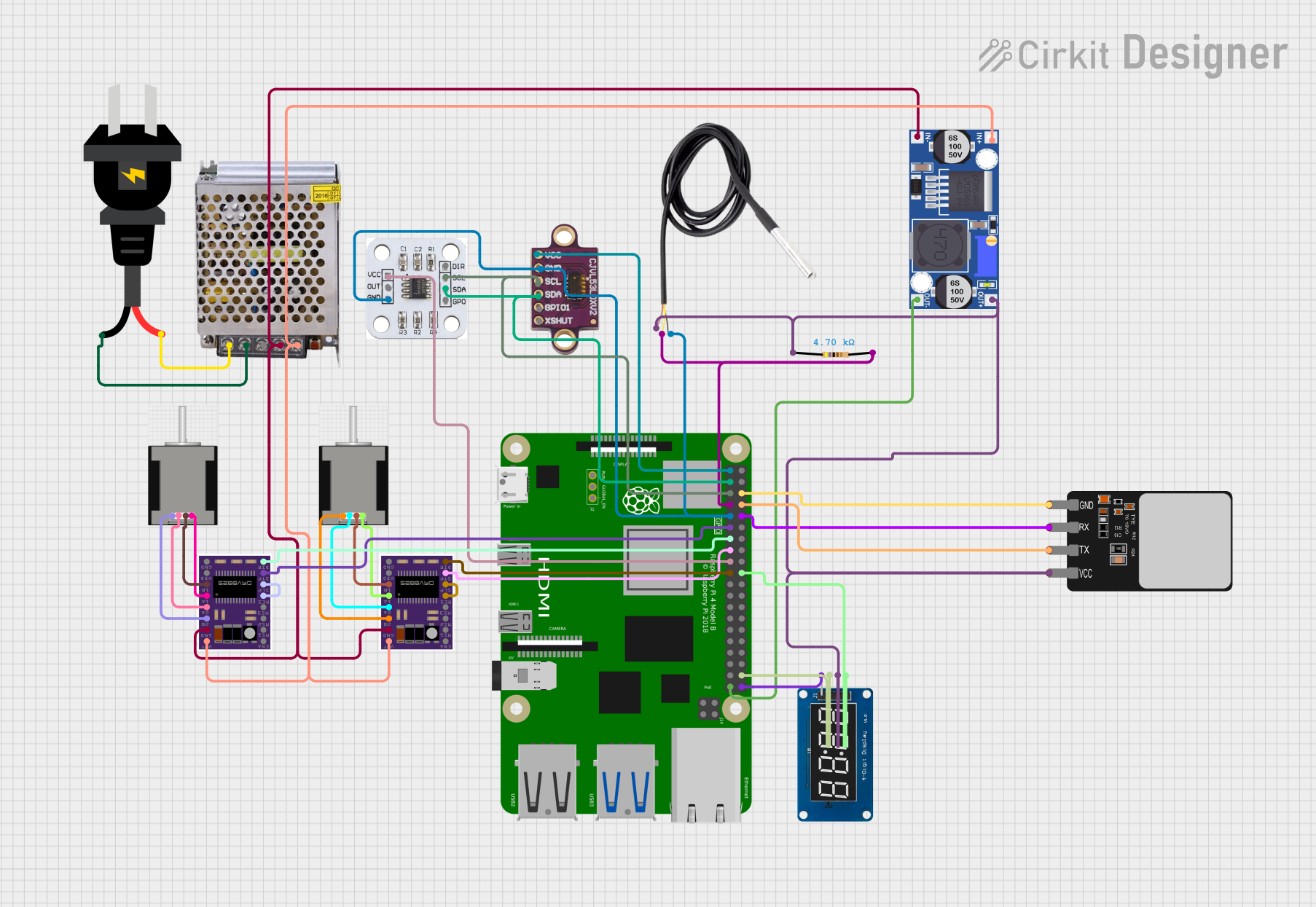
 Open Project in Cirkit Designer
Open Project in Cirkit Designer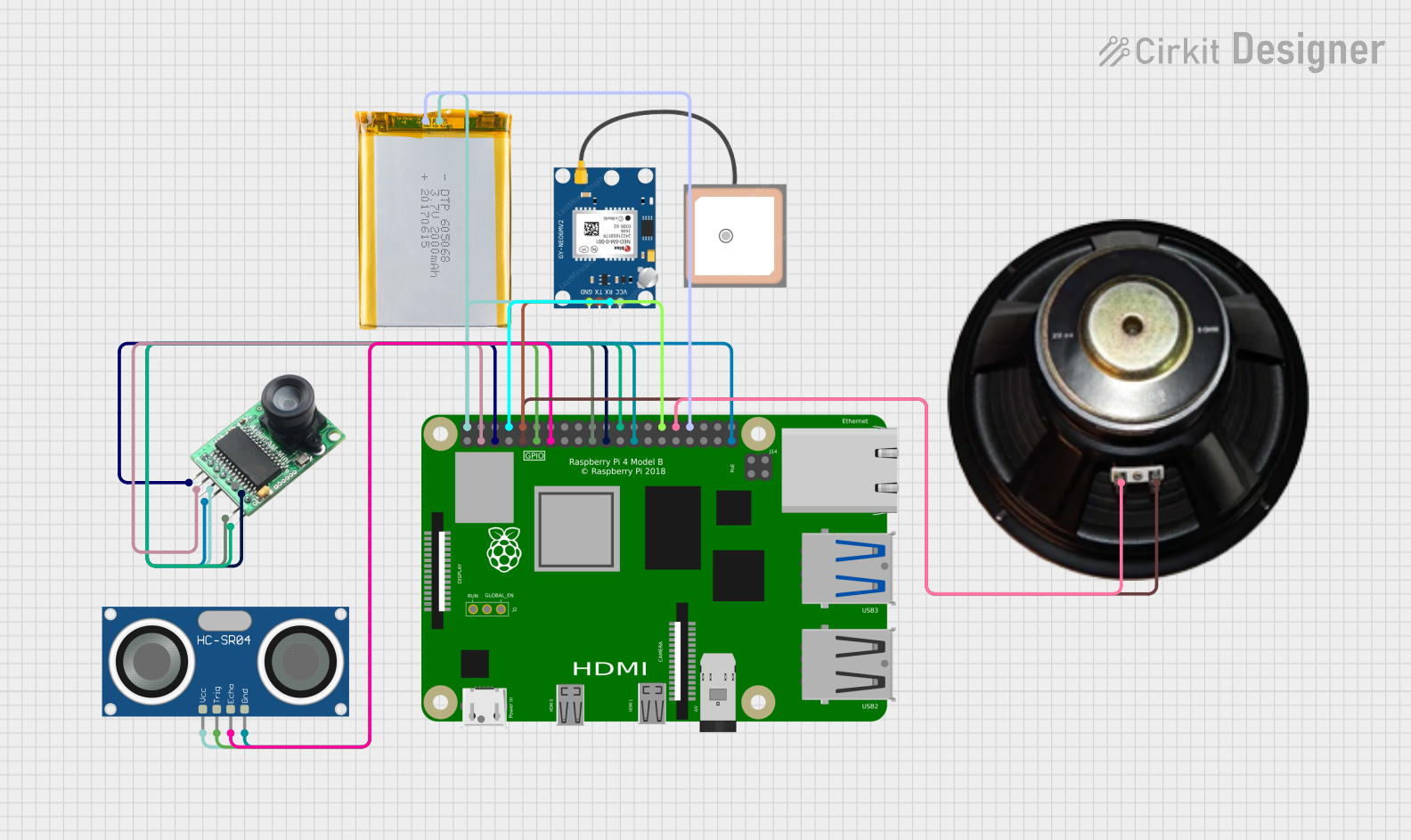
 Open Project in Cirkit Designer
Open Project in Cirkit DesignerExplore Projects Built with RPI 4 Model B

 Open Project in Cirkit Designer
Open Project in Cirkit Designer
 Open Project in Cirkit Designer
Open Project in Cirkit Designer
 Open Project in Cirkit Designer
Open Project in Cirkit Designer
 Open Project in Cirkit Designer
Open Project in Cirkit DesignerCommon Applications and Use Cases
- Education: Teaching programming, electronics, and computer science.
- IoT Projects: Serving as a hub for sensors and connected devices.
- Media Centers: Running software like Kodi for home entertainment.
- Prototyping: Developing and testing hardware and software solutions.
- Desktop Computing: Acting as a low-cost desktop replacement for basic tasks.
- Robotics: Controlling robots and other automated systems.
Technical Specifications
The Raspberry Pi 4 Model B offers a range of features and capabilities that make it suitable for various applications. Below are its key technical specifications:
General Specifications
| Feature | Specification |
|---|---|
| Processor | Quad-core ARM Cortex-A72 (64-bit) @ 1.5GHz |
| RAM Options | 2GB, 4GB, or 8GB LPDDR4 |
| Storage | MicroSD card slot (supports up to 1TB) |
| Networking | Gigabit Ethernet, Dual-band Wi-Fi (802.11ac) |
| Bluetooth | Bluetooth 5.0, BLE |
| USB Ports | 2x USB 3.0, 2x USB 2.0 |
| Video Output | 2x Micro HDMI (4K@60Hz supported) |
| GPIO Header | 40-pin GPIO (compatible with previous models) |
| Power Supply | 5V/3A via USB-C |
| Dimensions | 85.6mm x 56.5mm x 17mm |
Pin Configuration and Descriptions
The Raspberry Pi 4 Model B features a 40-pin GPIO header for connecting external devices. Below is the pinout:
| Pin Number | Pin Name | Description |
|---|---|---|
| 1 | 3.3V Power | 3.3V power supply |
| 2 | 5V Power | 5V power supply |
| 3 | GPIO2 (SDA1) | I2C Data Line |
| 4 | 5V Power | 5V power supply |
| 5 | GPIO3 (SCL1) | I2C Clock Line |
| 6 | Ground | Ground |
| 7 | GPIO4 | General Purpose I/O |
| 8 | GPIO14 (TXD) | UART Transmit |
| 9 | Ground | Ground |
| 10 | GPIO15 (RXD) | UART Receive |
| ... | ... | ... |
For the full GPIO pinout, refer to the official Raspberry Pi documentation.
Usage Instructions
How to Use the Raspberry Pi 4 Model B
Powering the Device:
- Use a 5V/3A USB-C power supply to power the Raspberry Pi 4 Model B.
- Ensure the power supply is of good quality to avoid voltage drops.
Setting Up the Operating System:
- Download the Raspberry Pi OS (or another compatible OS) from the official Raspberry Pi website.
- Flash the OS image onto a microSD card using tools like Balena Etcher.
- Insert the microSD card into the Raspberry Pi's card slot.
Connecting Peripherals:
- Connect a monitor via one or both Micro HDMI ports.
- Attach a keyboard and mouse to the USB ports.
- Optionally, connect to a network via Ethernet or Wi-Fi.
Booting Up:
- Power on the Raspberry Pi by connecting the USB-C power supply.
- Follow the on-screen instructions to complete the initial setup.
Using GPIO Pins:
- Use the GPIO pins to connect sensors, LEDs, motors, and other peripherals.
- Libraries like
RPi.GPIO(Python) orpigpiocan be used to control the GPIO pins.
Important Considerations and Best Practices
- Cooling: The Raspberry Pi 4 Model B can get hot under heavy loads. Use a heatsink or fan for better thermal management.
- Power Supply: Always use a high-quality power supply to ensure stable operation.
- Static Electricity: Handle the board carefully to avoid damage from static electricity.
- GPIO Voltage: The GPIO pins operate at 3.3V. Do not connect 5V devices directly to the GPIO pins without a level shifter.
Example: Blinking an LED with GPIO and Python
Below is an example of how to blink an LED connected to GPIO pin 17 using Python:
Import the necessary library
import RPi.GPIO as GPIO import time
Set up GPIO mode and pin
GPIO.setmode(GPIO.BCM) # Use Broadcom pin numbering GPIO.setup(17, GPIO.OUT) # Set GPIO 17 as an output pin
try: while True: GPIO.output(17, GPIO.HIGH) # Turn on the LED time.sleep(1) # Wait for 1 second GPIO.output(17, GPIO.LOW) # Turn off the LED time.sleep(1) # Wait for 1 second except KeyboardInterrupt: # Clean up GPIO settings on exit GPIO.cleanup()
Troubleshooting and FAQs
Common Issues and Solutions
The Raspberry Pi does not boot:
- Ensure the microSD card is properly inserted.
- Verify that the OS image was correctly flashed onto the microSD card.
- Check the power supply for sufficient voltage and current.
Wi-Fi connectivity issues:
- Ensure the correct Wi-Fi credentials are entered.
- Check if the Wi-Fi network is within range.
- Update the Raspberry Pi OS to the latest version.
Overheating:
- Use a heatsink or fan to improve cooling.
- Avoid placing the Raspberry Pi in an enclosed space without ventilation.
GPIO pins not working:
- Double-check the pin connections and ensure the correct pin numbering is used in the code.
- Verify that the GPIO pins are not damaged.
FAQs
Q: Can I power the Raspberry Pi 4 Model B via GPIO pins?
A: Yes, you can power it via the 5V and GND pins on the GPIO header, but this bypasses the onboard power management and is not recommended.Q: What is the maximum resolution supported by the Raspberry Pi 4 Model B?
A: It supports up to dual 4K displays at 60Hz via the Micro HDMI ports.Q: Can I use the Raspberry Pi 4 Model B as a desktop computer?
A: Yes, it is powerful enough for basic desktop tasks like web browsing, document editing, and media playback.Q: Is the Raspberry Pi 4 Model B backward compatible with older HATs?
A: Yes, the 40-pin GPIO header is backward compatible with HATs designed for previous Raspberry Pi models.